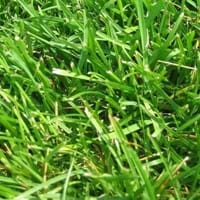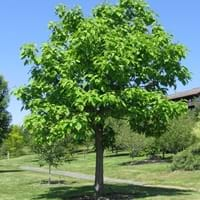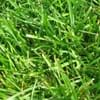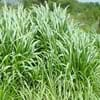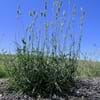Life Span
Perennial
Perennial
Origin
South America
United States, Southeastern United States, Central United States
Types
Pensacola, Argentine, Tifton 9
not available
Habitat
Wild
Moist woods, Swamps, Woodlands
USDA Hardiness Zone
8-11
4-8
Sunset Zone
Not Available
2a, 2b, 3a, 3b, 4, 5, 6, 7, 8, 9, 10, 11, 12, 13, 14, 15, 16, 17, 18, 19, 20, 21, 22, 23, 24
Habit
Mat-forming
Spreading
Minimum Width
Not Available
Flower Color
Not Available
White, Yellow, Purple
Flower Color Modifier
Bicolor
Bicolor
Fruit Color
Not Available
Green, Brown
Leaf Color in Spring
Green
Light Green
Leaf Color in Summer
Light Green
Light Green
Leaf Color in Fall
Green
Yellow green, Brown
Leaf Color in Winter
Green
Not Available
Leaf Shape
Needle like
Heart-shaped
Plant Season
Spring, Summer, Fall, Winter
Spring, Summer, Fall
Sunlight
Full Sun
Full Sun, Partial Sun, Partial shade
Type of Soil
Clay, Loam, Sand
Clay, Loam
The pH of Soil
Neutral, Alkaline
Acidic, Neutral, Alkaline
Soil Drainage
Well drained
Well drained
Bloom Time
Spring, Late Spring, Early Summer, Summer, Late Summer, Early Fall, Fall
Spring
Tolerances
Not Available
Wet Site, Drought
Where to Plant?
Ground
Ground
How to Plant?
Seedlings
Stem Planting
Plant Maintenance
Medium
Low
Watering Requirements
Does not require lot of watering
Keep ground moist
In Summer
Lots of watering
Lots of watering
In Spring
Moderate
Moderate
In Winter
Average Water
Average Water
Soil pH
Neutral, Alkaline
Acidic, Neutral, Alkaline
Soil Type
Clay, Loam, Sand
Clay, Loam
Soil Drainage Capacity
Well drained
Well drained
Sun Exposure
Full Sun
Full Sun, Partial Sun, Partial shade
Pruning
Proper mowing practices are necessary
Remove damaged leaves, Remove dead branches, Remove dead leaves
Fertilizers
All-Purpose Liquid Fertilizer
Apply 10-10-10 amount, Do not let fertilizers touch the leaves, Doesn't require fertilization when grown in rich soil
Pests and Diseases
Red blotch
Anthracnose, Brown Rot, Caterpillars, fungus, Sawfly Larvae, Verticillium Wilt
Plant Tolerance
Drought
Drought, Wet Site
Flower Petal Number
Single
Single
Foliage Texture
Coarse
Coarse
Foliage Sheen
Glossy
Glossy
Attracts
Not Available
Not Available
Allergy
allergic conjunctivitis, Asthma
Skin irritation
Aesthetic Uses
Ground Cover
Showy Purposes
Beauty Benefits
Not Available
Not Available
Environmental Uses
Air purification
Air purification
Medicinal Uses
Not Available
Not Available
Part of Plant Used
Leaves
Whole plant, Wood
Other Uses
Recommended more for beef than for milk production
Used as Ornamental plant, Used for woodware, Used in Furniture
Used As Indoor Plant
No
No
Used As Outdoor Plant
Yes
Yes
Garden Design
Lawns and Turf
Feature Plant, Shade Trees, Street Trees
Botanical Name
PASPALUM notatum
CATALPA speciosa
Common Name
Bahia Grass
Northern Catalpa
In Hindi
बाहिया घास
Northern Catalpa
In German
Bahia Grass
Northern Catalpa
In French
l'herbe de Bahia
Nord Catalpa
In Spanish
bahia hierba
Catalpa Norte
In Greek
Bahia γρασίδι
Βόρεια Catalpa
In Portuguese
bahia grama
Northern Catalpa
In Polish
Bahia trawy
Północnej Catalpa
In Latin
bahia herba
Northern Catalpa
Phylum
Magnoliophyta
Magnoliophyta
Class
Liliopsida
Magnoliopsida
Order
Poales
Scrophulariales
Family
Poaceae
Bignoniaceae
Clade
Angiosperms, Commelinids, Monocots
Angiosperms, Asterids, Eudicots
Tribe
Paspaleae
Not Available
Subfamily
Not Available
Not Available
Number of Species
Not Available
Not Available
Difference Between Bahia Grass and Northern Catalpa
If you are confused whether Bahia Grass or Northern Catalpa are same, here are some features about those plants to help you choose better. Many people think that these two plants have the same characteristics, but one can see Bahia Grass and Northern Catalpa Information and learn more about it. Fertilizers required for proper growth of Bahia Grass are All-Purpose Liquid Fertilizer, whereas for Northern Catalpa fertilizers required are Apply 10-10-10 amount, Do not let fertilizers touch the leaves and Doesn't require fertilization when grown in rich soil. Hence, one should know the basic difference between Bahia Grass and Northern Catalpa if you are planning to have them in your garden to enhance its beauty.
<
Flowering PlantsImportance of Bahia Grass and Northern Catalpa
Want to have the most appropriate plant for your garden? You might want to know the importance of Bahia Grass and Northern Catalpa. Basically, these two plants vary in many aspects. Compare Bahia Grass and Northern Catalpa as they differ in many characteristics such as their life, care, benefits, facts, etc. Every gardener must at least have the slightest clue about the plants he wants to plant in his garden. Compare their benefits, which differ in many ways like facts and uses. The medicinal use of Bahia Grass is Not Available whereas of Northern Catalpa is Not Available. Bahia Grass has beauty benefits as follows: Not Available while Northern Catalpa has beauty benefits as follows: Not Available.
Compare Facts of Bahia Grass vs Northern Catalpa
How to choose the best garden plant for your garden depending upon its facts? Here garden plant comparison will help you to solve this query. Compare the facts of Bahia Grass vs Northern Catalpa and know which one to choose. As garden plants have benefits and other uses, allergy is also a major drawback of plants for some people. Allergic reactions of Bahia Grass are allergic conjunctivitis and Asthma whereas of Northern Catalpa have Skin irritation respectively. Having a fruit bearing plant in your garden can be a plus point of your garden. Bahia Grass has no showy fruits and Northern Catalpa has showy fruits. Also Bahia Grass is not flowering and Northern Catalpa is not flowering . You can compare Bahia Grass and Northern Catalpa facts and facts of other plants too.
